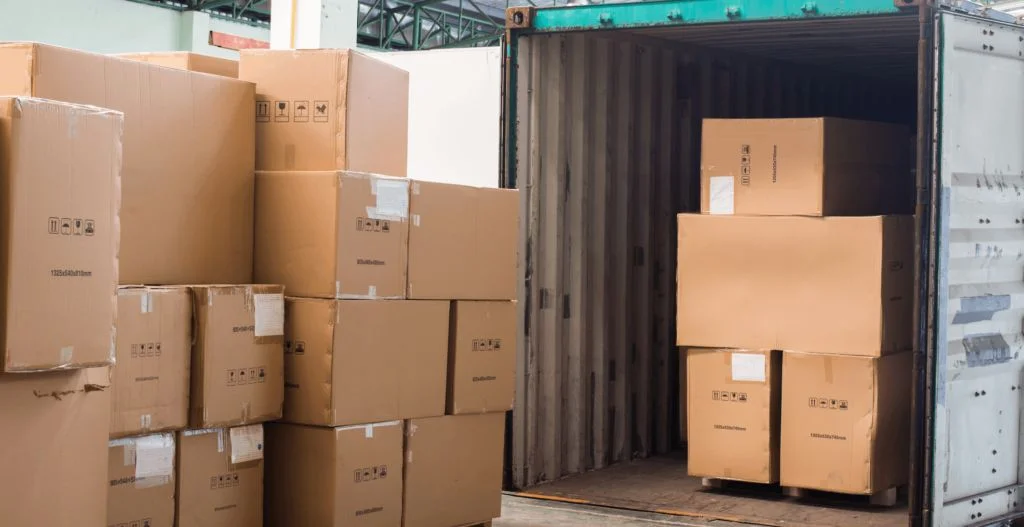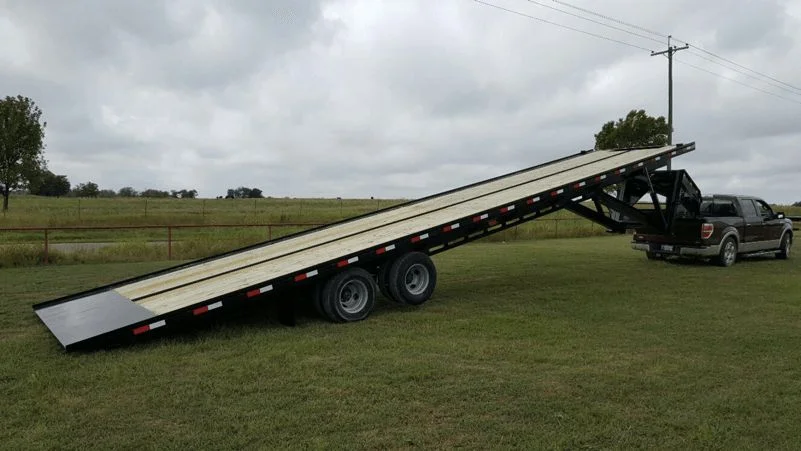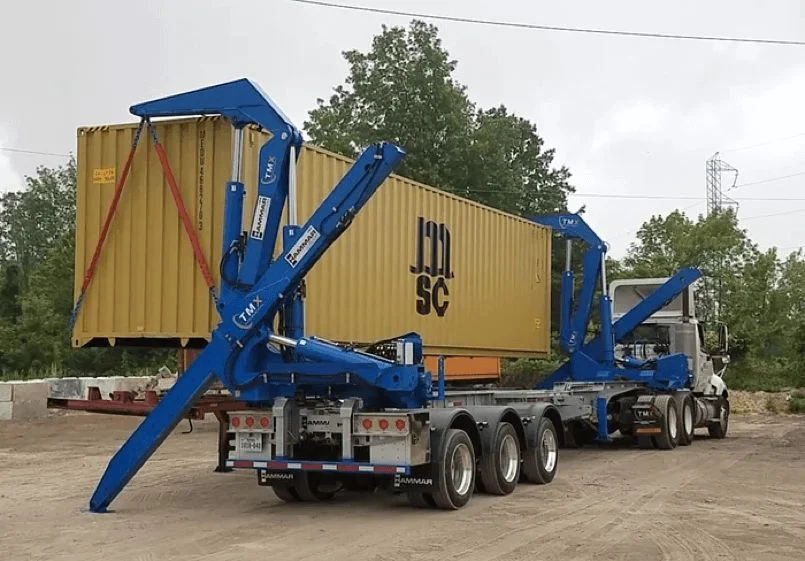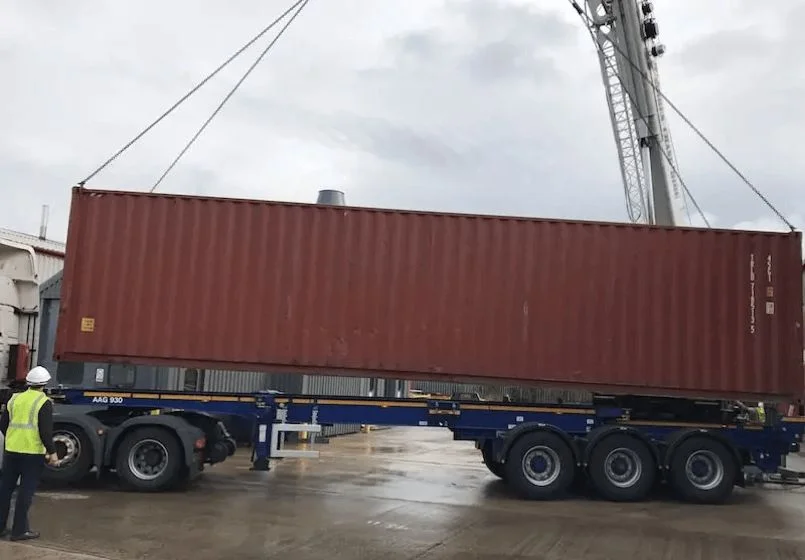What to Consider When Buying A Shipping Container For Moving House
Whether you’re moving across the country or relocating a few minutes away, a moving shipping container can be incredibly beneficial. Before you buy a shipping container for moving house, you probably have questions surrounding shipping container moving — and shipping containers in general. Read this guide to learn more

Whether you’re moving across the country or simply relocating a few minutes away, a shipping container can make your move so much more convenient.
From saving time to keeping your items safe and dry, shipping containers are a versatile solution that complements (or even replaces) traditional moving companies. The best part? When you’re finished moving, a shipping container you own can be used for anything you’d like on your new property. Hello, additional storage or Airbnb unit!
But let’s back up a step. Before you buy a shipping container for moving house, you probably have questions surrounding shipping container moving — and shipping containers in general.
Let’s go over the key steps (and answer the main questions) about buying a shipping container for moving houses:
1. Why Book a Shipping Container When Moving
2. How To Buy a Shipping Container For Moving House (4 Steps)
3. Post-Move: What To Do With Your Container
Why Book A Shipping Container When Moving?
Before detailing the ins and outs of ordering, acquiring, and moving a shipping container, let’s briefly explore a few benefits you can expect when you order a shipping container for moving.
After speaking with Calebwedman customers who used shipping containers for their move, here are the most common benefits they cite.
More Flexibility For Your Move
Owning a shipping container means you can use it to move whatever need moving: appliances, automobiles, refrigerated items, delicate items that traditional movers won’t touch, and plenty more.
With traditional movers, issues can arise. The terms and conditions might say they won’t pick up a certain item — for example, a delicate antique family heirloom — leaving you to manage those extra details. Or, perhaps worse, the moving company initially agrees to everything but the movers refuse to touch certain items on the big day. Unfortunately, that’s part of the contract you signed, and it would leave you in a huge bind.
Or… you can simply use a shipping container. Just make sure you get the right shipping container for your particular needs — a process that one of Calebwedman’s knowledgeable container specialists is happy to help with.
Extend Your Moving Timelines
If you’ve ever moved before, you know the intense hassle that is moving day: A moving company shows up, hauls away all your boxes, and plops them down in your new home. At best, it’s a bit stressful. At worst, it’s a nightmare scenario where things get lost or damaged.
With a shipping container, that all changes. You can have the container arrive at your home well in advance of your move, giving you as much time as you want to put things together, place boxes where you want them, and more.
Since you own the container, you also don’t have to unload everything on day one. You can leave your container on your new property for a few days (or even weeks) while you slowly move things in.
Keep Your Items Safe (And Dry)
Shipping containers are designed to facilitate the long-distance transportation of goods that are often expensive, fragile, and/or hazardous. Therefore, a shipping container needs to be sturdy, simple to use, and weatherproof — benefits you get access to when you use one for your move.
If you’re concerned about getting your precious assets from A to B, shipping containers for moving are the way to go.
The bottom line: Shipping container moves are relaxing, versatile and self-paced.
How To Buy A Shipping Container For Moving House (4 Steps)

So, you’ve made up your mind: a shipping container is the right tool for your move. What comes next?
1. Decide On Your Moving Use Case
The first thing to decide is how you plan to use your shipping container during your move. Generally speaking, there are three options:
1a. Use The Container To Move Your Belongings
Pre-load your stuff into a shipping container and have it delivered to your new property (more on delivery in step 4, below). This can be in lieu of or in addition to traditional movers; it depends on how much you need to move and if traditional movers are flexible enough to move everything you own.
It’s worth noting this doesn’t need to be permanent: shipping containers hold a lot of their resale value, so you could simply sell it after your move.
1b. Use The Container For Post-Move Storage
Rather than using a shipping container to move items, some folks may prefer to have a container waiting at their new property — movers can unload some items into the container (to avoid over-filling your new home). Even after you’ve fully moved in, the container remains on the property for additional storage.
This use case not only makes moving a little less stressful but can also be valuable long-term if you’re downsizing. When you have a container for additional storage, you can move whenever you find the right property without immediately needing to purge additional furniture or personal belongings.
1c. Both
When you own the container, you can do whatever you’d like! If you use it for moving, get it delivered to your old place first. Then, when you move, have the delivery company place the container where you’d like it to stay on your new property.
From there, you can use it for a more peaceful move and continue using it for long-term storage or other post-move use cases (more on that below!).
2. Pick The Size Of Container You Need
The three most common types of shipping containers are as follows:
- 20ft Standard: 20-feet long and 8’6” tall
- 40ft Standard: 40-feet long and 8’6” tall
- 40ft High-Cube: 40-feet long and 9’6” tall
Additional sizes, such as 45ft and 53ft containers, are available but scarce. For moving house purposes, most Calebwedman customers find that a used 40ft standard wind-and-watertight container (40-feet long and 8’6” tall) container works perfectly for their needs.
Curious about which type of container best suits your needs — used or new, standard or high-cube? We wrote a guide on choosing the right shipping container just for you.
Note: The size of the container will also impact how it can be delivered (more on that in Step 4, below).
3. Source Your Container
Acquiring a shipping container used to be a complex and opaque process. If you didn’t personally know someone at a port, you had to jump over several hurdles to get a shipping container — and even then, there was no guarantee of a fair price.
Calebwedman streamlines the process:
1. Your needs: Start by telling us the size (20ft or 40ft) and condition (new or used) that you want.
2. Sourcing: Calebwedman’s in-house technology scans the market for local inventory and pricing, ensuring you get the best price for your shipping containers.
3. Coordination: Calebwedman arranges a fast, white-glove delivery (typically within 7-10 days) right to your door – whether that’s your old home for moving or your new home for long-term storage.
You don’t need to have a background in logistics or shipping to use our service. We’re here for everyday people who want full control over the process — without needing to personally build a network of port authority employees! We help you capitalize on the benefits of shipping container moving — like freedom and flexibility — without the hassle.
4. Arrange Delivery
If you’re working with Calebwedman, we’ll handle all the logistics for you. However, if you’re doing it by yourself or working with another third party, you might have to coordinate delivery and not all shipping containers transport the same way.
Here’s what you need to know.
Delivery of 20-foot containers
Delivery of 20-foot containers
Loaded 20ft containers can normally be picked up by most moving companies, and are easy to transport on shorter distances. They represent a fantastic option for quick, easy container moving.
Option 1: Roll-off/tilt-bed

These would normally be transported on “roll-off/ tilt-bed trailers”. Some of the companies offering this service do have restrictions on how far they will travel with these trucks, so plan well in advance.
Option 2: Flatbed & crane
If you are moving long-distance, it might be more beneficial to book a “flatbed” trailer for shipping container moving, which is generally cheaper. The disadvantage is that you would have to arrange to have the loaded container lifted onto the trailer both at home moving origin and destination, which would require either a forklift (approved for the loaded weight) or a crane.
Delivery of 40-foot containers
A loaded 40ft moving container is more difficult to handle due to the extra length and weight. As a consequence, most ground-level transportation companies are not able to pick up and move 40ft-loaded containers. In the case of moving 40ft containers, there are two options:
Option 1: Side-lifter

To transport a loaded 40ft moving container, the side-lifter is the ideal solution as they can take a fully loaded 40ft moving container and load/offload it where you need it. In this way, you avoid having to book a crane or forklift. These trucks are, however, more expensive than traditional flatbed transports. That said, booking a side-lifter truck removes all the headaches of coordinating both a trucking company and a crane/forklift company.
Option 2: Flatbed + crane
As an alternative, you can book a crane at the origin to lift the moving shipping container onto a flatbed truck, and a similar crane at the destination site to offload the container. While the flatbed transport might be cheap, renting cranes could be expensive, so it’s always a good idea to get these costs clarified in advance.

Post-Move: What To Do With Your Container
Ok, so you’ve moved! Congrats! Now… what are you supposed to do with your shipping container?
Use It As A Garage
If you have multiple cars or want storage for construction tools, consider using your shipping container as a garage after your move.
You will likely need to add a door and a lockbox to the container, but both of those additions are relatively easy.
Turn It Into An Accessory Dwelling Or Additional Unit
Want a guest house on your property? A shipping container is a perfect way to accomplish that.
Whether you’ve downsized your main property and need extra space or want an Airbnb for additional income, turning a shipping container into a home could add significant value to your property.
Note: check with local jurisdictions about whether you’re allowed to have a detached accessory dwelling or start an Airbnb business before you invest money into converting a container into a livable space.
Use It As Storage
A quick repeat of something mentioned above—when you own your container, you can keep it on your property for storage. This could mean taking your time to move boxes into your new home or keeping it long-term on your property in lieu of building (or restoring) an outbuilding.
Note: if your goal is long-term storage, ask your delivery company to place the container where you want it to stay.
Donate It
If you don’t need your container anymore, consider donating it—there are many projects across the United States, Canada, and Europe that convert shipping containers into tiny homes for people who don’t have secure housing.
Resell It
Shipping containers hold their value over time, meaning you could resell your container for nearly what you purchased it for (and, in some cases, even turn a profit).
Move With Peace of Mind
A moving house container is the best way to get your home valuables from point A to B – wherever your destination is in the world. Shipping containers for moving are convenient, durable, weather-proof and versatile. And shipping container moves are a relatively relaxed experience compared to hectic on-the-day moves.
We hope that you found this guide useful and don’t hesitate to get in touch with our shipping container experts to talk about your move and what kind of container might be the right fit.
